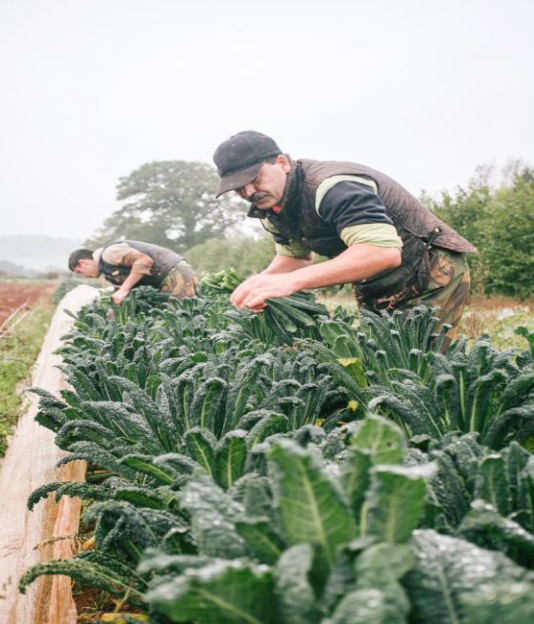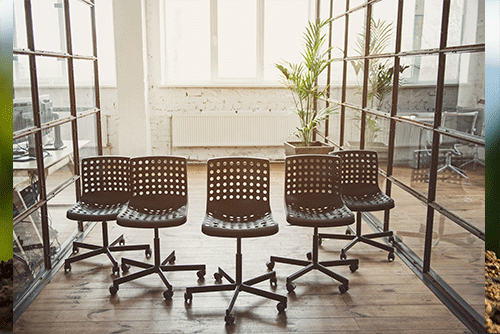circular business models
reshape the Economy
By embedding circular requirements into the procurement process, vendors are incented to rethink and redesign their products and business models to consider the entire lifecycle of their goods or services to improve resource efficiency, reduce carbon emissions, minimize waste, maximize value, and reduce costs securing economic benefits for all actors in the supply and value chain.
Five circular models that underpin the circular economy are based on the principles of longevity, reuse, repairability, upgrade, share, and material reduction. Each model is unique, and procurement can encourage the delivery of one or a combination of models.


The circular economy requires circular business models.
Circular business models require circular procurement demands.

Business Model #1:
Product as service
products are used by one or many customers through lease or pay-for-use arrangements
A shift from the conventional model of buy-to-own to lease or pay-for-use arrangement. Rather than a one-time sell, the product or asset is transitioned as a service where value is based on outcomes and performance rather than the physical asset. The costs and risks of ownership and waste management rest with the provider. Companies that offer this circular business model can establish longer and stronger relationships with customers. They also achieve more value out of each product by charging for its multiple uses and incented to design products that recover and reutilize the materials back into production as they maintain ownership.
Example: tool rentals; lightning as a service, printing services, car sharing, clothing rentals

It is crucial to thoroughly assess how and when a product will be used to consider its effectiveness as a service:
- What is needed: is it the product itself, or the service or outcome it provides?
- Can the service or outcome be procured in favour of ownership?
- What are the benefits to the service provider if the service is procured instead of the product?
- What are the benefits to the organization if the service is procured instead of the product?
- What are the long-term environmental, economic, and social benefits of procuring the service instead of the product?
- How can procurement be used to create additional demand for other circular business models and value throughout the entire supply chain?
The product as service model can simultaneously create demand for resource recovery, circular supplies, product life extension, and sharing platform models.
- Focus procurement requirements on leasing the service rather than purchasing the product or asset.
- Focus requirements on pay- or buy-per-use.
- Include provisions that request how the product or asset is managed at the end of life. Doing this will help ensure resource recovery, encourage circular supplies, and supper repairability and recyclability.
Business Model #2:
Sharing Platform
Stimulating collaboration among
product users
Collaboration amongst individuals, organizations, or combination of both, to acquire the greatest productivity or value from a product that could otherwise be underutilized. Sharing platforms reduce the need to own a product or depreciating asset, and reduces waste and cost associated with its management throughout the entire lifecycle. This model can be leveraged by companies who want to want to increase the use and maximize value of products they sell.
Example: car sharing, tool rentals, consignment

To encourage the use of sharing platforms for assets, products, and services – and avoid the diminishing value of an asset – either within an organization or amongst many organizations, it is helpful to consider the following:
- How much or often will the product be used? What is the product’s utilization rate? This question will clarify how much a product is used compared to its diminishing value to determine whether sharing platform is a more viable option.
- Can the product or asset be borrowed or shared instead of buying?
- Can it be leased or rented and used by multiple departments or with other organizations?
The sharing platform model can also support the product as a service, product life extension, resource recovery, and circular supplies business models. To incorporate the other models, one must think about the entire lifecycle to identify where procurement can be influential.
- Focus procurement requirements on leasing and shared-use to maximize the value of resources.
- Include provisions to determine how the product or asset is managed at end of life to ensure resource recovery, where circular supplies can be encouraged, and when repairability and reuse are possible.
Business Model #3:
Product Life Extension
Extend the current lifecycle of a product: repairability, upgrading, reselling
Prolongs the life of products or assets to retain as much of their value as possible so they continue to be useful. This model is grounded on the ability of products or assets to be designed to last and be remanufactured, repaired, upgraded, or re-marketed. For companies it is important their business model focus on ensuring material that would normally be treated as waste is maintained or improved to avoid disposal, and used as a potential source of new or additional revenue.
Example: computer hardware upgrades, furniture repair

Product design and how it is made are influential to extending the life and value of the product and materials.
- Can the product in use be repaired?
- Can a defective part be easily replaced?
- Does the product or asset include a warranty? Can I request a lifetime warranty or warranty for parts to extend the useful life?
- Is the product or asset designed for disassembly to ensure easy upgrade or repairability?
- Are repairability provisions and services included in the cost of the product, and if so, what are they?
- Are value-added services available to encourage upgrading or the reselling of the product at the end of its initial useful life?
This circular model also supports and encourages resource recovery and circular supplies. To embed considerations to address additional models consider the entire lifecycle to identify where resources can be recovered or where the use circular supplies can be encouraged.
- Focus procurement requirements on ensuring reuse of products, parts, or materials.
- Require the design for disassembly, long life, or guaranteed lifespan.
- Request warranty of product, as well as for parts or components.
- Incorporate value-added services, including repairability, easy upgrade, availability of parts, or resale opportunities.
Business Model #4:
Resource Recovery
Eliminate material leakage and maximize economic value of product flows
Designed as a closed-loop system where materials that were traditionally considered waste are recovered or reused as new resources back into the production cycle. This model maximizes economic value by eliminating material leakage and useful for companies that produce large quantities of by-product, or where waste from products can be captured and reprocessed. Driving resource recovery into product design and business delivery models is critical to elevating the value of discards or waste materials as a preference to virgin inputs.
Example: food and organic waste recycling, deposit return for beverage containers

Encourage and integrate resource recovery into procurement practices:
- Can the service provider take back and recover the product and its components when no longer of value in its orginial form?
- Do secondary markets exist for the recovered materials?
- Does the local market have the ability to reuse the recovered materials?
- Can demand be stimulated through the procurement of recovered resources?
- Can the procurement support the development and build capacity for local reuse opportunities and solutions?
- Can the service provider take back the product and give it a second life through maintenance, repair, refurbishment, or resell?
- Design procurement provisions to require take-back and recycling of the product, materials, and parts.
- Extend procurement requirements to reduce the amount of packaging used, or demand the recovery and recycling of packaging.
- Incorporate requirements to direct the use of local or nearby secondary markets for material to be used as an input into production processes.
Business Model #5:
Circular Supplies
Supply fully renewable, recyclable, or biodegradable resource inputs to support circular production
Based on products that are designed to use material inputs that are fully renewable, recyclable, or biodegradable so they can be used in consecutive production and consumption cycles. It replaces the traditional linear resource approach by phasing out non-renewable resources or single-use products that end up as waste.
This business model creates efficiencies throughout the lifecycle of products and reduces unnecessary waste. It is particularly useful for businesses affected by scarce commodities and volatile markets.
Examples: coat lining or patio furniture or a knapsack made from recycled

Existing resources can be recovered can be used as feedstock for circular production. To create the demand for circular supply, examine the resources used in production, as well as materials that can be recovered and reused.
- Does the product include recovered, recycled, or biodegradable materials and resources?
- Can the service provider take back the product to ensure resources are recovered, recycled, reused, remanufactured, or reintegrated into original or secondary production processes to support circular supplies on a wider scale?
- Focus requirements on using post-consumer recycled content when procuring goods.
- Include requirements for the use of non-toxic chemicals or biodegradable materials.
- Incorporate requirements for recycling and final disposition points to ensure the proper end of life management and recovery of materials or parts.
- Request products are given a second life with a chosen organization(s), and request a chain of custody to prove final disposition.
